Jivnesh Sandhan
CSSL: Contrastive Self-Supervised Learning for Dependency Parsing on Relatively Free Word Ordered and Morphologically Rich Low Resource Languages
Oct 09, 2024



Abstract:Neural dependency parsing has achieved remarkable performance for low resource morphologically rich languages. It has also been well-studied that morphologically rich languages exhibit relatively free word order. This prompts a fundamental investigation: Is there a way to enhance dependency parsing performance, making the model robust to word order variations utilizing the relatively free word order nature of morphologically rich languages? In this work, we examine the robustness of graph-based parsing architectures on 7 relatively free word order languages. We focus on scrutinizing essential modifications such as data augmentation and the removal of position encoding required to adapt these architectures accordingly. To this end, we propose a contrastive self-supervised learning method to make the model robust to word order variations. Furthermore, our proposed modification demonstrates a substantial average gain of 3.03/2.95 points in 7 relatively free word order languages, as measured by the UAS/LAS Score metric when compared to the best performing baseline.
DepNeCTI: Dependency-based Nested Compound Type Identification for Sanskrit
Oct 14, 2023



Abstract:Multi-component compounding is a prevalent phenomenon in Sanskrit, and understanding the implicit structure of a compound's components is crucial for deciphering its meaning. Earlier approaches in Sanskrit have focused on binary compounds and neglected the multi-component compound setting. This work introduces the novel task of nested compound type identification (NeCTI), which aims to identify nested spans of a multi-component compound and decode the implicit semantic relations between them. To the best of our knowledge, this is the first attempt in the field of lexical semantics to propose this task. We present 2 newly annotated datasets including an out-of-domain dataset for this task. We also benchmark these datasets by exploring the efficacy of the standard problem formulations such as nested named entity recognition, constituency parsing and seq2seq, etc. We present a novel framework named DepNeCTI: Dependency-based Nested Compound Type Identifier that surpasses the performance of the best baseline with an average absolute improvement of 13.1 points F1-score in terms of Labeled Span Score (LSS) and a 5-fold enhancement in inference efficiency. In line with the previous findings in the binary Sanskrit compound identification task, context provides benefits for the NeCTI task. The codebase and datasets are publicly available at: https://github.com/yaswanth-iitkgp/DepNeCTI
Linguistically-Informed Neural Architectures for Lexical, Syntactic and Semantic Tasks in Sanskrit
Aug 17, 2023



Abstract:The primary focus of this thesis is to make Sanskrit manuscripts more accessible to the end-users through natural language technologies. The morphological richness, compounding, free word orderliness, and low-resource nature of Sanskrit pose significant challenges for developing deep learning solutions. We identify four fundamental tasks, which are crucial for developing a robust NLP technology for Sanskrit: word segmentation, dependency parsing, compound type identification, and poetry analysis. The first task, Sanskrit Word Segmentation (SWS), is a fundamental text processing task for any other downstream applications. However, it is challenging due to the sandhi phenomenon that modifies characters at word boundaries. Similarly, the existing dependency parsing approaches struggle with morphologically rich and low-resource languages like Sanskrit. Compound type identification is also challenging for Sanskrit due to the context-sensitive semantic relation between components. All these challenges result in sub-optimal performance in NLP applications like question answering and machine translation. Finally, Sanskrit poetry has not been extensively studied in computational linguistics. While addressing these challenges, this thesis makes various contributions: (1) The thesis proposes linguistically-informed neural architectures for these tasks. (2) We showcase the interpretability and multilingual extension of the proposed systems. (3) Our proposed systems report state-of-the-art performance. (4) Finally, we present a neural toolkit named SanskritShala, a web-based application that provides real-time analysis of input for various NLP tasks. Overall, this thesis contributes to making Sanskrit manuscripts more accessible by developing robust NLP technology and releasing various resources, datasets, and web-based toolkit.
Aesthetics of Sanskrit Poetry from the Perspective of Computational Linguistics: A Case Study Analysis on Siksastaka
Aug 14, 2023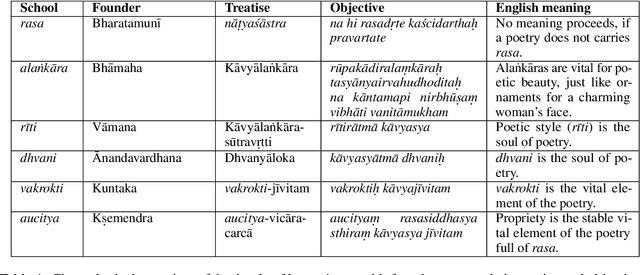
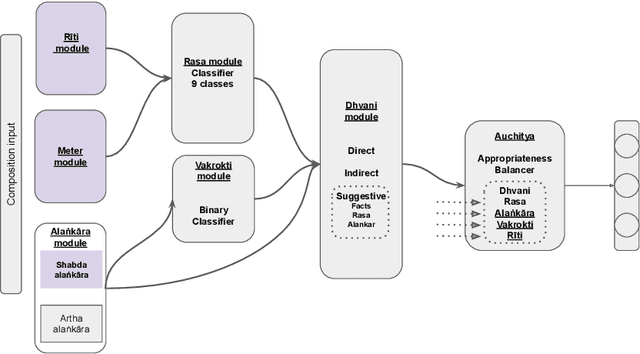
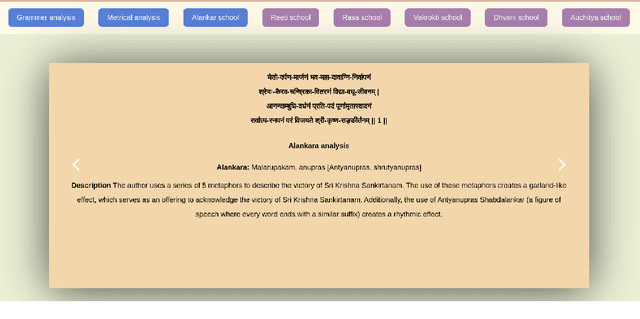
Abstract:Sanskrit poetry has played a significant role in shaping the literary and cultural landscape of the Indian subcontinent for centuries. However, not much attention has been devoted to uncovering the hidden beauty of Sanskrit poetry in computational linguistics. This article explores the intersection of Sanskrit poetry and computational linguistics by proposing a roadmap of an interpretable framework to analyze and classify the qualities and characteristics of fine Sanskrit poetry. We discuss the rich tradition of Sanskrit poetry and the significance of computational linguistics in automatically identifying the characteristics of fine poetry. The proposed framework involves a human-in-the-loop approach that combines deterministic aspects delegated to machines and deep semantics left to human experts. We provide a deep analysis of Siksastaka, a Sanskrit poem, from the perspective of 6 prominent kavyashastra schools, to illustrate the proposed framework. Additionally, we provide compound, dependency, anvaya (prose order linearised form), meter, rasa (mood), alankar (figure of speech), and riti (writing style) annotations for Siksastaka and a web application to illustrate the poem's analysis and annotations. Our key contributions include the proposed framework, the analysis of Siksastaka, the annotations and the web application for future research. Link for interactive analysis: https://sanskritshala.github.io/shikshastakam/
SanskritShala: A Neural Sanskrit NLP Toolkit with Web-Based Interface for Pedagogical and Annotation Purposes
Feb 19, 2023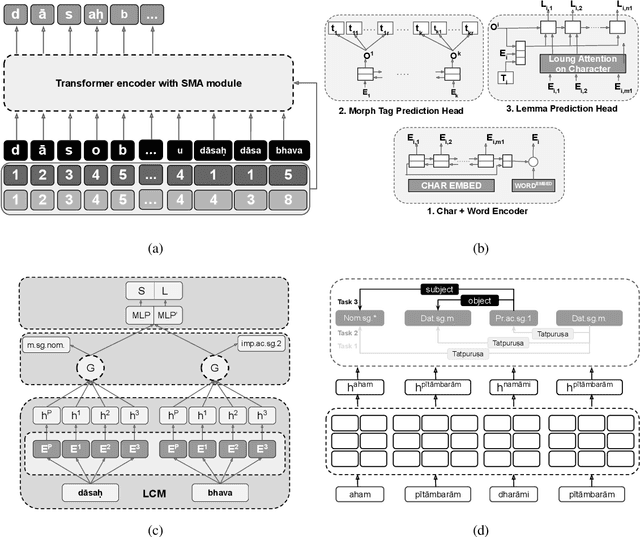
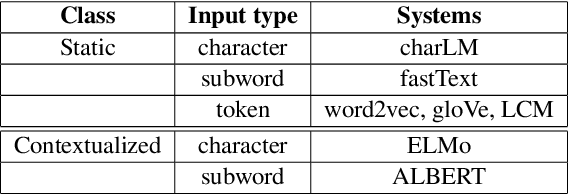
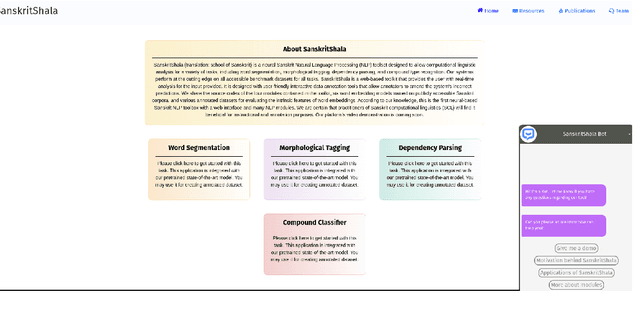
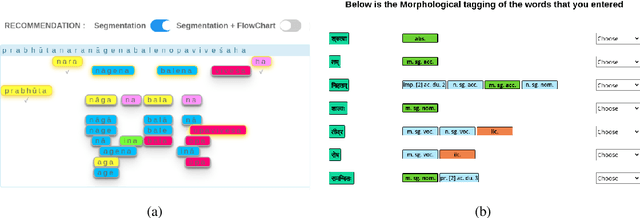
Abstract:We present a neural Sanskrit Natural Language Processing (NLP) toolkit named SanskritShala (a school of Sanskrit) to facilitate computational linguistic analyses for several tasks such as word segmentation, morphological tagging, dependency parsing, and compound type identification. Our systems currently report state-of-the-art performance on available benchmark datasets for all tasks. SanskritShala is deployed as a web-based application, which allows a user to get real-time analysis for the given input. It is built with easy-to-use interactive data annotation features that allow annotators to correct the system predictions when it makes mistakes. We publicly release the source codes of the 4 modules included in the toolkit, 7 word embedding models that have been trained on publicly available Sanskrit corpora and multiple annotated datasets such as word similarity, relatedness, categorization, analogy prediction to assess intrinsic properties of word embeddings. So far as we know, this is the first neural-based Sanskrit NLP toolkit that has a web-based interface and a number of NLP modules. We are sure that the people who are willing to work with Sanskrit will find it useful for pedagogical and annotative purposes. SanskritShala is available at: https://cnerg.iitkgp.ac.in/sanskritshala. The demo video of our platform can be accessed at: https://youtu.be/x0X31Y9k0mw4.
A Novel Multi-Task Learning Approach for Context-Sensitive Compound Type Identification in Sanskrit
Aug 22, 2022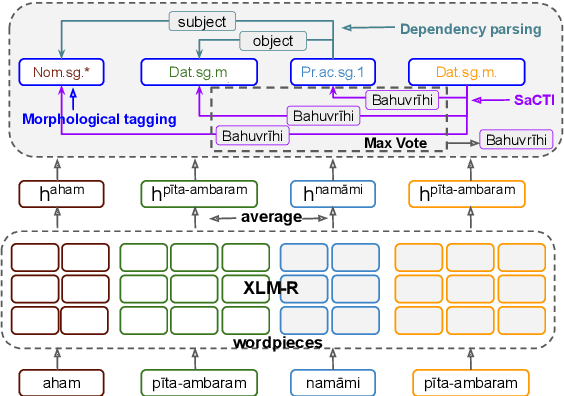

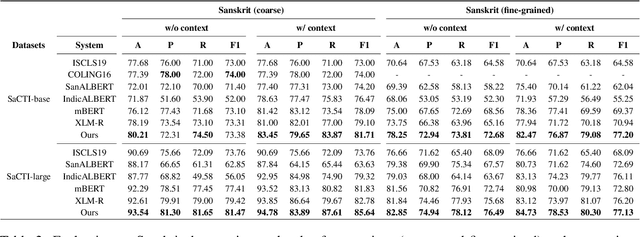
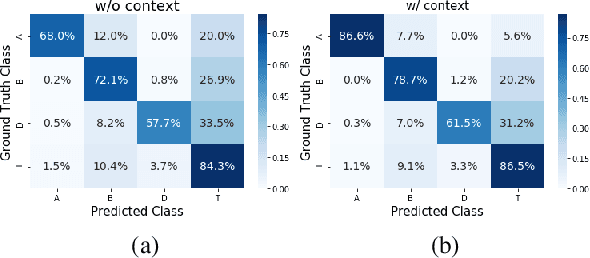
Abstract:The phenomenon of compounding is ubiquitous in Sanskrit. It serves for achieving brevity in expressing thoughts, while simultaneously enriching the lexical and structural formation of the language. In this work, we focus on the Sanskrit Compound Type Identification (SaCTI) task, where we consider the problem of identifying semantic relations between the components of a compound word. Earlier approaches solely rely on the lexical information obtained from the components and ignore the most crucial contextual and syntactic information useful for SaCTI. However, the SaCTI task is challenging primarily due to the implicitly encoded context-sensitive semantic relation between the compound components. Thus, we propose a novel multi-task learning architecture which incorporates the contextual information and enriches the complementary syntactic information using morphological tagging and dependency parsing as two auxiliary tasks. Experiments on the benchmark datasets for SaCTI show 6.1 points (Accuracy) and 7.7 points (F1-score) absolute gain compared to the state-of-the-art system. Further, our multi-lingual experiments demonstrate the efficacy of the proposed architecture in English and Marathi languages.The code and datasets are publicly available at https://github.com/ashishgupta2598/SaCTI
Prabhupadavani: A Code-mixed Speech Translation Data for 25 Languages
Jan 27, 2022



Abstract:Nowadays, code-mixing has become ubiquitous in Natural Language Processing (NLP); however, no efforts have been made to address this phenomenon for Speech Translation (ST) task. This can be solely attributed to the lack of code-mixed ST task labelled data. Thus, we introduce Prabhupadavani, a multilingual code-mixed ST dataset for 25 languages, covering ten language families, containing 94 hours of speech by 130+ speakers, manually aligned with corresponding text in the target language. Prabhupadvani is the first code-mixed ST dataset available in the ST literature to the best of our knowledge. This data also can be used for a code-mixed machine translation task. All the dataset and code can be accessed at: \url{https://github.com/frozentoad9/CMST}
Systematic Investigation of Strategies Tailored for Low-Resource Settings for Sanskrit Dependency Parsing
Jan 27, 2022Abstract:Existing state of the art approaches for Sanskrit Dependency Parsing (SDP), are hybrid in nature, and rely on a lexicon-driven shallow parser for linguistically motivated feature engineering. However, these methods fail to handle out of vocabulary (OOV) words, which limits their applicability in realistic scenarios. On the other hand, purely data-driven approaches do not match the performance of hybrid approaches due to the labelled data sparsity. Thus, in this work, we investigate the following question: How far can we push a purely data-driven approach using recently proposed strategies for low-resource settings? We experiment with five strategies, namely, data augmentation, sequential transfer learning, cross-lingual/mono-lingual pretraining, multi-task learning and self-training. Our proposed ensembled system outperforms the purely data-driven state of the art system by 2.8/3.9 points (Unlabelled Attachment Score (UAS)/Labelled Attachment Score (LAS)) absolute gain. Interestingly, it also supersedes the performance of the state of the art hybrid system by 1.2 points (UAS) absolute gain and shows comparable performance in terms of LAS. Code and data will be publicly available at: \url{https://github.com/Jivnesh/SanDP}.
Evaluating Neural Word Embeddings for Sanskrit
Apr 01, 2021



Abstract:Recently, the supervised learning paradigm's surprisingly remarkable performance has garnered considerable attention from Sanskrit Computational Linguists. As a result, the Sanskrit community has put laudable efforts to build task-specific labeled data for various downstream Natural Language Processing (NLP) tasks. The primary component of these approaches comes from representations of word embeddings. Word embedding helps to transfer knowledge learned from readily available unlabelled data for improving task-specific performance in low-resource setting. Last decade, there has been much excitement in the field of digitization of Sanskrit. To effectively use such readily available resources, it is very much essential to perform a systematic study on word embedding approaches for the Sanskrit language. In this work, we investigate the effectiveness of word embeddings. We classify word embeddings in broad categories to facilitate systematic experimentation and evaluate them on four intrinsic tasks. We investigate the efficacy of embeddings approaches (originally proposed for languages other than Sanskrit) for Sanskrit along with various challenges posed by language.
A Little Pretraining Goes a Long Way: A Case Study on Dependency Parsing Task for Low-resource Morphologically Rich Languages
Feb 12, 2021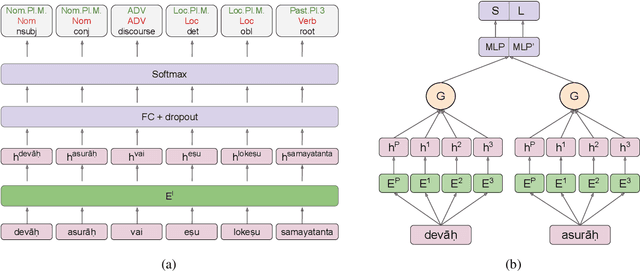



Abstract:Neural dependency parsing has achieved remarkable performance for many domains and languages. The bottleneck of massive labeled data limits the effectiveness of these approaches for low resource languages. In this work, we focus on dependency parsing for morphological rich languages (MRLs) in a low-resource setting. Although morphological information is essential for the dependency parsing task, the morphological disambiguation and lack of powerful analyzers pose challenges to get this information for MRLs. To address these challenges, we propose simple auxiliary tasks for pretraining. We perform experiments on 10 MRLs in low-resource settings to measure the efficacy of our proposed pretraining method and observe an average absolute gain of 2 points (UAS) and 3.6 points (LAS). Code and data available at: https://github.com/jivnesh/LCM
 Add to Chrome
Add to Chrome Add to Firefox
Add to Firefox Add to Edge
Add to Edge